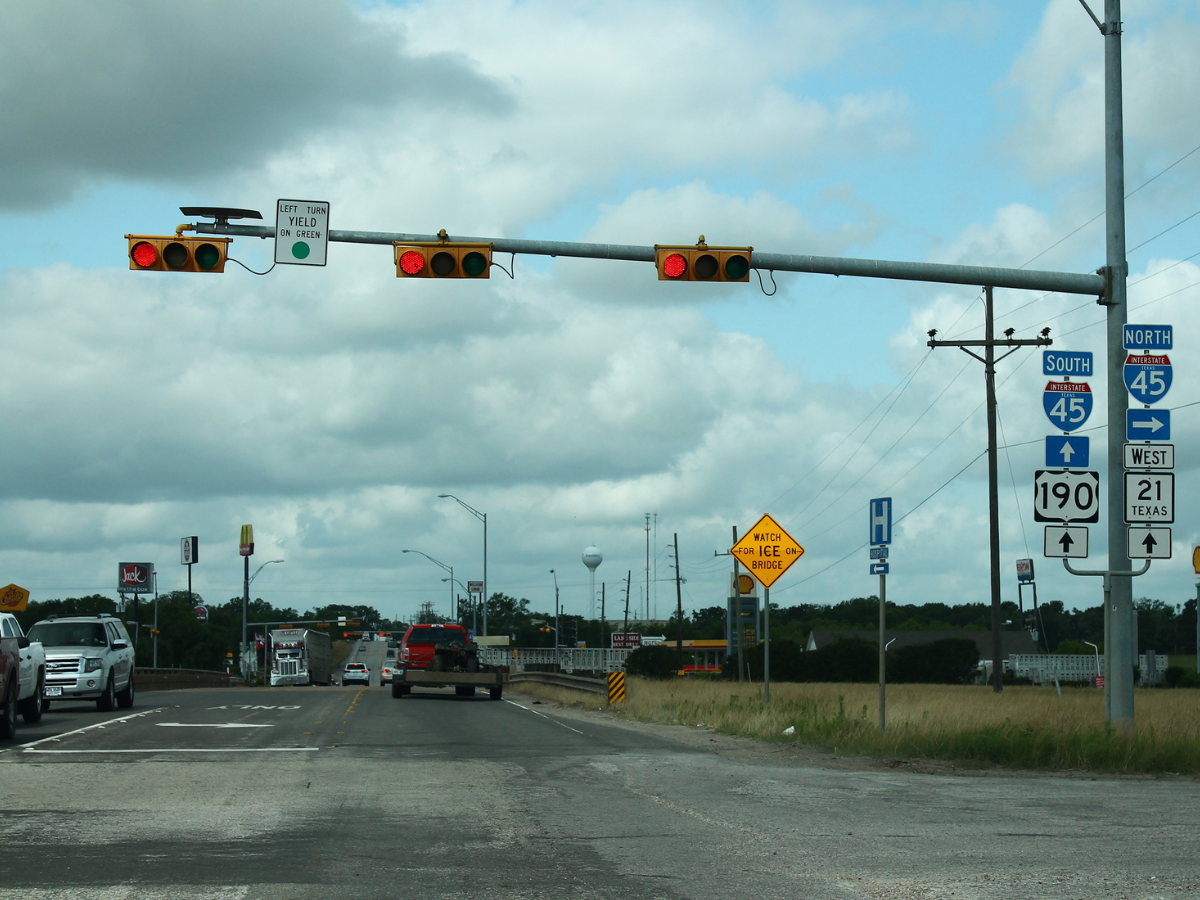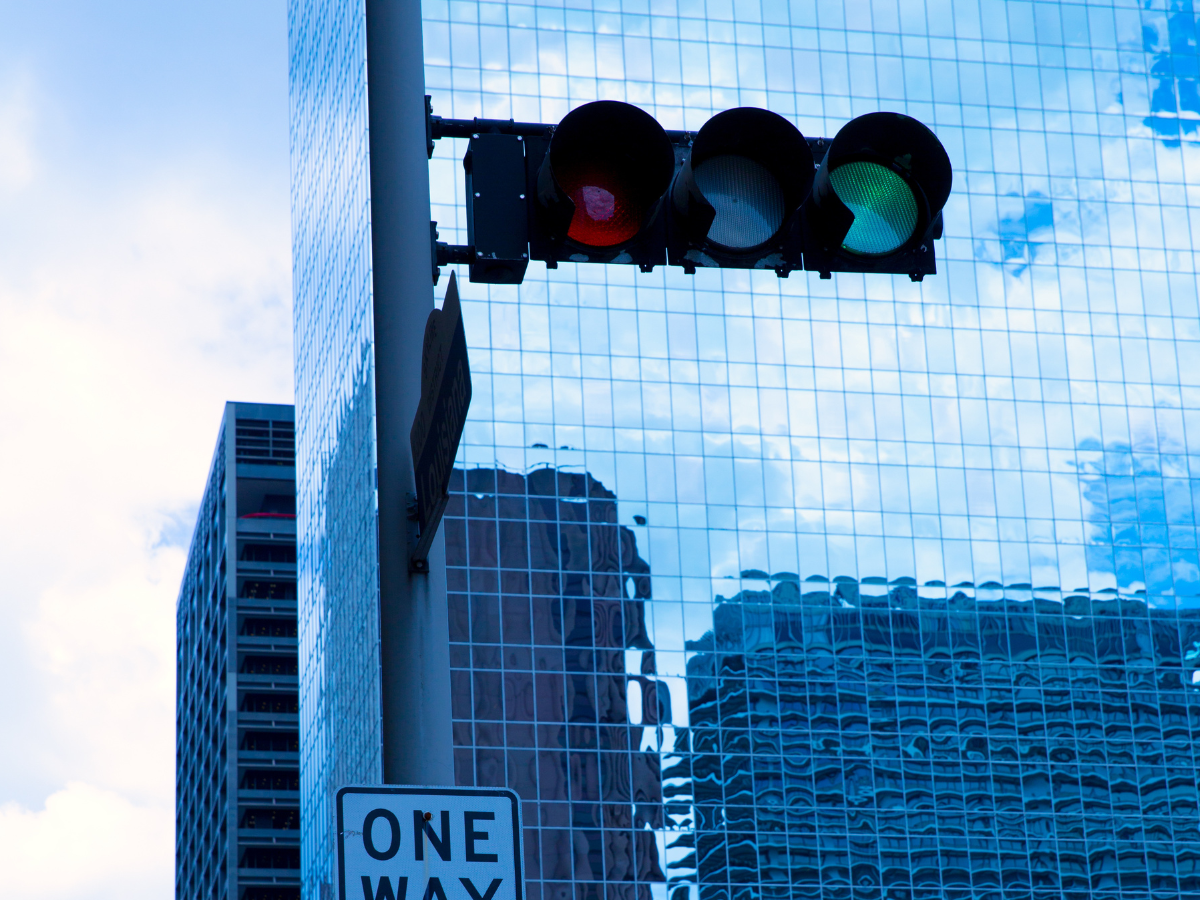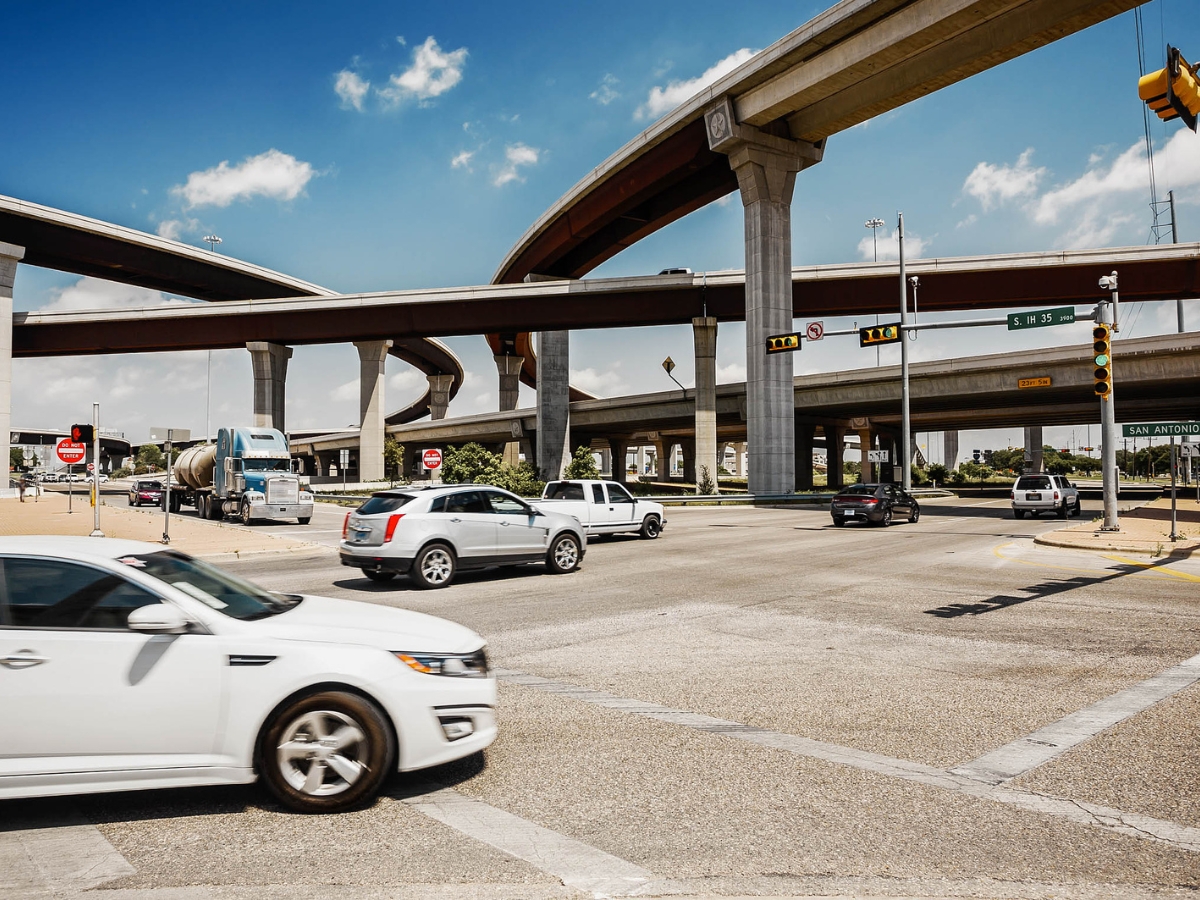Share the post "Why Texas Does Traffic Lights Differently: Side View"
Texas is one of the most unique places on the planet. Despite being the second largest state and the second most populated state in the U.S., Texas has particular quirks that set it apart from other places. Its history, culture, and traditions make it one of the most critical states in the country, and Texans are proud of that.
All of the above considered, certain seemingly insignificant oddities within Texas find their way into the mainstream via the internet. One such particularity is the traffic light configuration, specifically the horizontal lights. So, today we’re exploring why Texas traffic lights are sideways.

Why Texas Traffic Lights Are Sideways
After spending a few days in the Lone Star State, many tourists notice something a little strange when sitting in traffic. Many of the traffic lights in Texas are horizontal, sitting sideways rather than vertically upright. This isn’t unique to Texas, but just a handful of states implement the same design.
The main reason for the horizontal traffic lights is safety. In heavily populated states where there are highways and interstates aplenty, there tends to be a lot more traffic. So, with high volumes of vehicles on major roads, horizontal lights offer greater visibility to more people.
Another critical factor is the cost. Installing horizontal frames typically requires shorter poles and mounting heads, which ultimately means using less metal. While you might not think that the difference in cost compared to a vertical light is significant, the savings add up on a large scale.
As the largest contiguous state regarding landmass, Texas has a whopping 7.78 million registered vehicles. It also has the most cities of any state. So, naturally, the state government must implement cost-saving measures where possible. Saving money on metal and increasing visibility makes sense in Texas.
Legal Reasons
The Manual on Uniform Traffic Control Devices (MUTCD) sets the guidelines regarding legalities. Under their specifications, traffic lights can be installed vertically or horizontally as long as they are visible to drivers. This allows state governments to mount lights that best suit their needs.
Below, we take a closer look at horizontal vs. vertical light systems, uncovering why either design may be more suitable for specific locations.

Horizontal Vs. Vertical Traffic Lights
As we’ve discussed above, Texas traffic lights are sideways and ultimately boils down to traffic volumes and cost savings. But what about other states? Why doesn’t every state use horizontal stoplights if they can save significant taxpayer money?
Essentially, state engineers must consider four core design factors when creating and installing traffic lights. Another important note is that many states may have originally mounted vertical traffic lights when cities were developing. Even though they are now bigger, the cost of redoing all the lights would be huge.
Unless the existing infrastructure is deemed unsafe, it may be hard for state governments to justify major investments in traffic light equipment. Like most state-run systems, the design and installation of stoplights come down to a financial decision.
That said, you may see a combination of horizontal and vertical stoplights in certain states. In general, horizontal lights are found on high-volume traffic highways, interstates, and bridges. So, keep an eye out the next time you’re taking a road trip that takes crosses multiple state borders.
Now, let’s look at the four most important influencers behind designing traffic signal equipment, like stoplights.

1. The Wind Factor
In the United States, the national standard light signal is a vertical pole with a vertically oriented signal hanging along the side. They are usually attached to each other with one mounting unit. For the most part, this type of setup offers ample security and visibility.
However, at large intersections, these vertical lights may not be easy to see so they may need to be placed higher. This exposes the unit to more wind. Sideway lights are usually tethered by two connection points, giving the unit more stability. Horizontal lights with two connections are both easier to see and more resistant to wind.
2. Vertical Clearance
Vertical clearance is one of the most important considerations when mounting traffic signal equipment. Optimal visibility is more complicated than you might think when it comes to lights. Placing vertically oriented lights higher increases the vertical clearance but causes other problems.
Although the actual unit may be easier to see, they’re likely outside of a driver’s cone of vision because they’re located on the side of the road. Horizontal lights hang over the road and lie within this cone, so they’re easy to see, and the driver doesn’t have to turn their head or intentionally look for them.
Furthermore, horizontal lights can be installed closer to the road while achieving the same visibility as a vertical light mounted higher. So, in terms of vertical clearance, especially relating to high-volume traffic roads, horizontal lights are generally a better option.
3. Aesthetics
Aesthetics and tradition also play a part in how traffic lights are designed and installed. For example, in many states, the light brackets are yellow, the same color as school buses, making them easy to spot. However, others are black with reflective materials, ensuring they’re easily seen.
But, if you’re used to yellow traffic lights, perhaps it may take you a little longer to spot the black reflective ones. Similarly, if a state has had vertical traffic lights for decades but decides to change to horizontal lights to increase visibility, locals may be used to the old orientation, so the idea might backfire.
So, ultimately, when state councils make decisions on factors like traffic signals, all of these factors are considered. In many cases, people are more comfortable with what they’re used to. This causes resistance to change, even if the new approach is deemed a better all-around option.

4. It’s A Matter Of Safety
At the end of the day, traffic lights are in place for safety reasons. The U.S. Department of Transportation (USDOT) pays close attention to the statistics on road safety. Changes are generally implemented based on road accidents and death numbers.
If the orientation of traffic lights is deemed to be a contributing factor to accidents, changes or adjustments will be made. However, if it isn’t, there is very little reason for state governments to invest their resources in wholesale change. Moreover, this would likely lead to public resistance.
Other things, like the positioning of signage, road markings, speed limits, and infrastructure design tend to take precedence. What works in one state may not be optimal for another. In Texas, sideways traffic lights appear to be working just fine.
Horizontal Traffic Lights USA
There are no uniform instructions for states on how they should design and install their traffic lights. Instead, the MUTCD provides guidelines and outlines of criteria, within which there is plenty of wiggle room. Once the lights fulfill the mandatory requirements, there are few restrictions.
Provided the signal head of the light is between 40 and 180 feet from the driver’s line of sight, there are few rules regarding their color, design, or orientation. This is the main reason why we see different types of traffic lights around the country and it’s what makes the Texas standard stand out so much.
What States Have Horizontal Traffic Lights?
Texas isn’t unique in the U.S. with its horizontal traffic lights. However, the vast majority of states use vertical lights as standard. The other states that have horizontal lights include Florida, New Mexico, and Nebraska.
Considering Florida’s population size and 7.85 million registered vehicles, there’s no surprise that they opt for sideways lights. With Nebraska and New Mexico, the reasons are likely to be visibility and vertical clearance, as we discussed earlier.
Horizontal Traffic Lights Colors For Blind People
Although people who are totally blind are not permitted to drive in the United States, certain low-vision or visually impaired drivers are allowed to in certain situations. For example, if corrective lenses can improve vision sufficiently, the individual must wear them for driving.
Colorblind people may also face challenges with traffic lights. In fact, many colorblind people have difficulties differentiating between green and red. Therefore, with horizontal traffic lights, the red light is always on the left, while the green light is always on the right.
Why Are Some Traffic Lights Black?
As we touched on earlier, there are no restrictions on the color of the traffic light frame. Obviously, the actual lights must follow the red, amber, and green systems. Although most traffic light frames in the U.S. are yellow, like a school bus, many are black.
The reason behind traffic signal backplates is to make them stand out and provide contrast against the background. Black frames are built with reflective materials, making them pop against an urban backdrop or even a sparse skyline, so whether yellow or black, traffic lights are built to be seen.
References
- Registered vehicles in Texas: statista.com
- Traffic lights legalities: txdot.gov
- Common colorblind issues: nih.gov
Share the post "Why Texas Does Traffic Lights Differently: Side View"
Christian Linden is a seasoned writer and contributor at Texas View, specializing in topics that resonate with the Texan community. With over a decade of experience in journalism, Christian brings a wealth of knowledge in local politics, culture, and lifestyle. He holds a Bachelor's degree in Communications from the University of Texas. When he's not writing, Christian enjoys spending weekends traveling across Texas with his family, exploring everything from bustling cities to serene landscapes.











